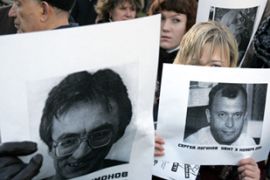2006 a deadly year for media
Iraq is the most lethal conflict for journalists since Vietnam.

It maintained the highest record for the fourth year running, becoming the biggest graveyard for journalists since Vietnam.
Since fighting began in 2003, 139 journalists have been killed there, more than twice the number in the 20-year Vietnam war (63 killed between 1955 and 1975). About 90 per cent of the victims were Iraqis.
The organisation earlier said the media was attacked from the first day of the fighting in Iraq, when cameraman Paul Moran, of the Australian TV network ABC, was killed by a car bomb on March 22, 2003.
Al Jazeera crew
Tariq Ayub, an Al Jazeera reporter, was killed on April 8, 2003 when a US missile hit the television station’s Baghdad bureau.
An Al Jazeera television worker, Rashid Hamid Wali, was killed on May 21, 2004 while filming clashes in the flashpoint Iraqi city of Karbala.
 |
| Atwar Bahjat was killed on February 23, 2006 |
And former Al Jazeera reporter Atwar Bahjat was kidnapped and killed on February 23, 2006 while covering sectarian violence in Samarra.
Reporters Without Borders includes journalists in its death count only when it is certain that their deaths were linked to their work as journalists.
The second-most dangerous country was Mexico, which moved ahead of Colombia as Latin America’s deadliest place for the media. Nine journalists were killed there in 2006 because they were investigating drug trafficking or reporting on violent social unrest.
The situation in the Philippines was grim too, with six journalists killed compared with seven in 2005.
Three journalists were killed in Russia, making 21 since Vladimir Putin came to power in March 2000.
More than 1,400 physical attacks or threats were also recorded by Reporters Without Borders in 2006, which was another record.
The organisation registered physical attacks on journalists in different countries during national elections this year. The countries included Bangladesh, Peru, Brazil, the Democratic Republic of Congo, Uganda, Ethiopia and Belarus.
Censorship and arrests
Cases of censorship were slightly down – 912 against 1,006 in 2005, when Nepal had the worst record.
Thailand recorded the most cases of censorship. After a military coup in September, more than 300 community radio stations were shut down along with several websites. Things returned to normal after a few weeks.
It was impossible to get exact information on censorship in China, Burma and North Korea, countries where blanket measures were taken against the media, affecting dozens and even hundreds of outlets at the same time.
The internet was tightly controlled in some countries. Reporters Without Borders issued a list in November of 13 “enemies of the Internet” (Belarus, Burma, China, Cuba, Egypt, Iran, North Korea, Saudi Arabia, Syria, Tunisia, Turkmenistan, Uzbekistan and Vietnam).
About 30 bloggers were arrested during the year and held for several weeks, notably in China, Iran and Syria. Egypt appeared for the first time on the “enemies of the internet” list for its growing crackdown on bloggers who criticised Islam or Hosni Mubarak, the president.
Murdered
At least 871 media workers were detained around the world in 2006, some for a few hours and others sentenced to many years in prison.
For the first time, Reporters Without Borders recorded in detail the number of journalists kidnapped around the world.
At least 56 were kidnapped in 2006 in a dozen countries. The two riskiest places were Iraq, where 17 were seized, and the Gaza Strip, where six were kidnapped. All those seized in the Palestinian Territories were freed, but six in Iraq were murdered by their captors.